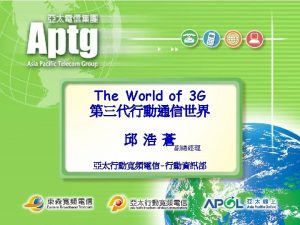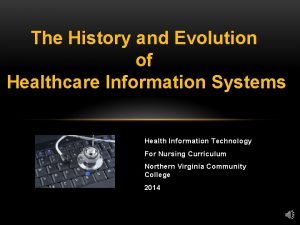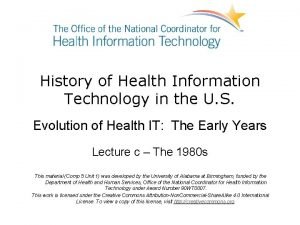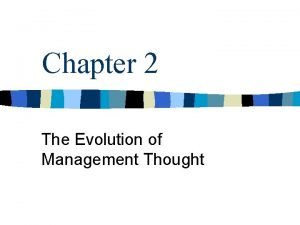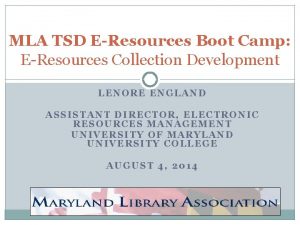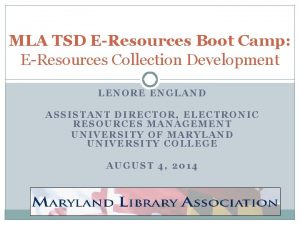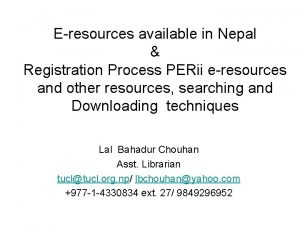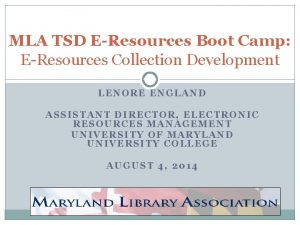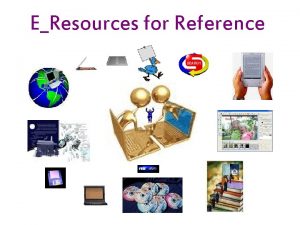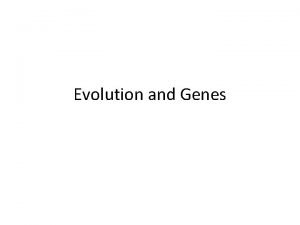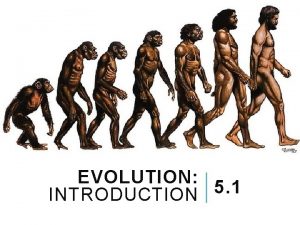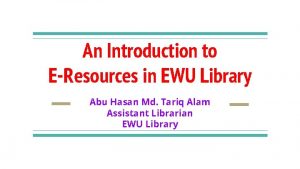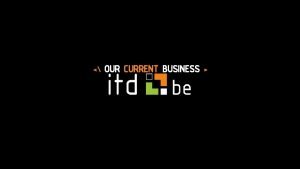EResources Introduction v The current evolution in Information

















- Slides: 17

E-Resources

Introduction v The current evolution in Information technology bring major changes in the way of Information communication. Information Communication technology developments opened up new avenues to e-resources publishing in a big way. v. E- resources is the distribution of information in any electronic form starting from CDROM to Whats. App msg.

What is e- Resources ? • Electronic resources (or e-resources) are materials in digital format accessible electronically. • Examples of e-resources are electronic journals (ejournal), electronic books (e-book), E-Maps , EMagazines , E-Thesis, WWW , E-Newspaper , E-Mail , EResearch Reports , E-Bibliographic Databases , online databases in varied digital formats, Adobe Acrobat documents (. pdf), Web. Pages (. htm, . html, . asp etc) and more. • The Library Proxy Service enables remote access to eresources off-campus.

Characteristics of E-Resources • • Access to every document by anyone; from any where Retrieval of e-resources is quicker than print resources The users can be guided to the document by providing a link. Easy to search the text The collection available in electronic format can be of any media. In electronic environment the interaction between user and librarian is frequent. No defined user group The software can help the users in retrieving the desired information; hardly intermediate can help users

Selections of E-Resources • The selection of E-Resources should be done according to the need and demand of users. As a librarian one should consider the following steps at the time of selection. ü To know the needs of users. ü To know content and scope of e-resources. ü To examine quality of the e-resources and search facility among them. ü To maintain cost effectiveness. ü To check either subscription based or web based at the time of purchasing. ü To check the license copy. ü To evaluate educational support and training. ü To check the compatibility and technical support.


Where do e-Resources come from? • Similar to a book, an e-Resource has a publisher, called a vendor. • The library subscribes to an e-Resource through the vendor, signing a subscription agreement outlining the cost of the subscription as well as the rights and responsibilities of the library, its customers, and the vendors themselves. Examples of vendors include EBSCO, Pro. Quest, and Mc. Graw Hill.

Subscription of E- Resources • Library subscribes to and pays for e-Resources on its own. Selection of these e-Resources is based on multiple factors, including current collection gaps and customer needs. • Sometimes e-Resources is subscribed in partnerships with other libraries, called consortia, splitting costs for subscriptions and providing access to multiple resources at a discounted price. • In some cases libraries are fortunate to receive e. Resources through Govt. funded consortia.

Purpose of E- resources • • • Main purpose of electronic resources is providing current information. Up date information is necessary for research work. Through electronic resources users are able to access latest information. Save the time of user and staff Solve the space problem in library Easy to use and disseminate

Need of Electronic Resources Electronic resources have great potential and bright future to attract users. It combines all the benefits of the multimedia, digital coding and Internet. It enable user to carry everywhere and can be read on all types of computers including handled device. v v v E- Resources can be downloaded instantly. Users can read an e- resource any time Due to portability, e-resources can be taken any where on portable computer. Font size can be changed suitably; E- resources provide facility to hold and turn pages easily Physically disabled users can hear audible E- resources

BENEFITS TO USERS Ø Independent of space and time Ø Interact with other electronic resources Ø Save user’s time (Ranganathans’ Fourth Law) Ø Provides value addition such as search ability, supplements, formats unavailable in print formats Ø Accelerated publication Ø Can be read by multiple users simultaneously Ø Can’t be mutilated, stolen, lost etc. 11

Rules for access Electronic Resources • • • The e-Resources are licensed for the nonprofit educational use of the Institute. Copyright law governs use of these e. Resources. Access to e-Resources is based on license agreements with publishers.

Rules for access Electronic Resources Doing the following things are strictly prohibited: • Systematic downloading, distributing, or retaining substantial portions. • Forwarding electronic versions of articles or the use of electronic articles for commercial purposes. • Strictly prohibited to download entire journal issue or databases or an entire e-book.

Rules for access Electronic Resources • • Library users are permitted to make digital copies of individual documents, that is, to download an individual document temporarily to their own hard disc for non-commercial purposes only. Under the terms of use it neither permits forwarding electronic versions of articles nor the use of electronic articles for commercial purposes.

Rules for access Electronic Resources • Publishers keep track of patterns of use and where the publishers suspect misuse in the form of systematic downloading (eg. more than one article from an issue, continuous downloading from a particular journal etc. )

Copy right issue about E- resources • • The Internet IS NOT the public domain. However, if we make a copy and put it on our personal WWW site, it less likely to be considered fair use. If we make a copy from an electronic source, such as the Internet or WWW, for our personal use, it is likely to be seen as fair use.

Thank you
 Ezproxy unimap
Ezproxy unimap Y connected generator
Y connected generator Line current and phase current
Line current and phase current Drift current and diffusion current in semiconductor
Drift current and diffusion current in semiconductor Line current and phase current
Line current and phase current Drift vs diffusion current
Drift vs diffusion current What is diffusion current and drift current
What is diffusion current and drift current The jfet always operates with
The jfet always operates with In a triangle connected source feeding a y connected load
In a triangle connected source feeding a y connected load Slideplayer
Slideplayer Drift current and diffusion current in semiconductor
Drift current and diffusion current in semiconductor In alternators the welding current is produced on the
In alternators the welding current is produced on the Hazard based safety engineering
Hazard based safety engineering Non planar circuit
Non planar circuit Evolution of information technology
Evolution of information technology Evolution of healthcare information systems
Evolution of healthcare information systems History and evolution of health information technology
History and evolution of health information technology Evolution of management thoughts
Evolution of management thoughts














